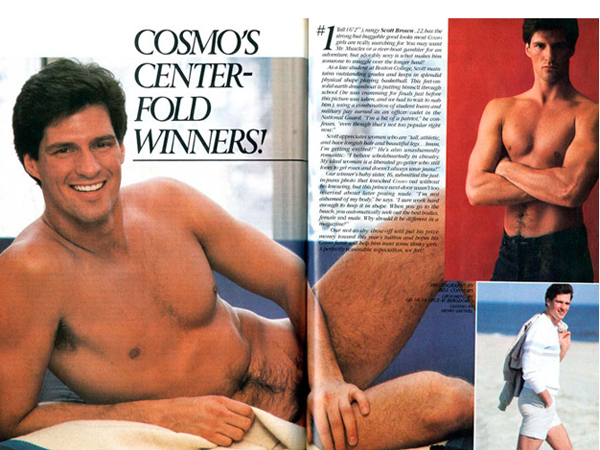From the London Times, regarding new Massachusetts Senator Scott Brown:
Others question Brown’s man-of-the-people image. ‘I drive a truck,’ he declared in a debate. ‘And, yes, it has 200,000 miles on it now.’ Yet according to The Huffington Post, a review of Brown’s last financial disclosure, filed in 2009, showed he and his wife own five properties…
Granted, the author is a journalist and thus not that intellectually rigorous (note the unattributed copout that opens the quote.) But this week’s post hinges on the egregious use of one word – “yet”. It implies that owning multiple houses and driving a working man’s vehicle are somehow conflicting – when if you’re disciplined enough, one ought to go hand-in-hand with the other.
Irrespective of Scott Brown’s stand on any other issue, this assessment of his financial priorities alone would be enough to earn him our vote.
The author tries to make the point that Brown’s absence of pretention is faux, and that he’s an out-of-touch tycoon with no sensibility for the proletarians in his constituency. To garner respect from the foreign press, presumably he should a) buy a newer and more expensive vehicle (irresponsible), and/or b) sell houses Nos. 2 through 4 and kick the renters out (even more so). Whether his origin is scrappy working class or Boston Brahmin, Brown embodies the Control Your Cash mantra:
Buy assets, sell liabilities.
He’s doing it close to perfectly. You spend as much as you can on real estate and other things that increase in value, and you spend as little as possible on cash drains like cars and trucks. This is exactly how you should be allocating your money. Drive your vehicle as far as it will go, take the money you could spend on a new vehicle, and instead buy concrete assets with it, like property.
The five houses Brown and his wife own include their primary home (assessed at $549,600), a vacation home in New Hampshire ($472,500), and three condos near the primary home (totaling $471,100). (They also have a dang-blasted timeshare in the Netherlands Antilles worth less than $20,000, but in Brown’s defense he didn’t have a chance to read Control Your Cash while campaigning.)
Brown, or at least Brown’s garage, represents something we like to style controlled frugality for lack of a better term. (If you can think of something more apt, share it with us.) The word “frugal” makes people think of austerity, of abstention – of self-inflicted pain. That’s not what this is about. This is about spending money – a finite resource for most of us – in the right places. Brown is affluent and doubtless has his own indulgences, whatever they might be. But he understands that refusing to spend money on an unnecessarily pricey way to get around town is one of the easiest and most effective ways to Control one’s Cash.
Considering how many miles are on Brown’s 2005 GMC Canyon, he either bought it new, or the original owner sold it to him a few days after buying it. Either way, Brown has spent the last 5 years and 5 months driving his truck an average of about 85 miles daily. For a man with $1.5 million in real estate holdings, to say nothing of his IRAs, Union Pacific stock, bonds and money market account, it wouldn’t be at all remarkable for Brown to have spent $60,000 on another vehicle in that time, if not $120,000 on two.
Most impressively, there’s nothing luxurious about the Canyon (nor its model equivalents, the Chevy Colorado and Isuzu I-Series.) Brown isn’t driving a Cadillac Escalade EXT nor a Lincoln Blackwood*, which look and sound like the kind of things senators would drive. The 2010 Canyon retails for as little as $20,000, which is a far more effective way to spend that money than on a piece of Aruban beachfront that you only get to use 7 days a year and have to pay for 2% of the maintenance of even if you’re responsible for 0% of the damage.
Assuming Brown’s Canyon is in “good” and not “excellent” condition, and that he drives the extended cab (fancier than the regular, plainer than the crew), and that he chose the 5-cylinder model, and that his has 4-wheel drive (not sure what the point of owning a 2-wheel drive truck is, unless you live somewhere tropical and flat like Tuvalu), Kelley Blue Book estimates that a private buyer in Brown’s 02093 ZIP code would buy his truck for $7460.
A lot of America’s financial problems could be solved if our senators were forced to drive vehicles worth less than $7500. Come to think of it, that would make a great rule of thumb – senators’ and representatives’ real estate holdings must be worth at least 200 times what their vehicles are worth. This would still entitle John Kerry to drive the most ostentatious thing Floyd Mayweather has ever fancied, although former Delaware Senator Joe Biden might have had to get by with a Vespa scooter.
This says more about Brown than the obvious, too. Keeping a truck running for 200,000 miles takes care and diligence. Just ask this Control Your Cash author, who followed the maintenance schedule religiously, treated his 2003 TrailBlazer like some people treat their firstborn, and couldn’t sell it fast enough when an out-of-state buyer offered to take it home after 3 years and 130,000 miles.
With a stroke of a pen, and a chronic refusal to accept fiscal reality, the president recently raised the nation’s debt limit to $44,000 per capita. Meanwhile, controlled frugality seems second nature to Scott Brown. Anyone who treats his vehicle with that much care is the kind of person you want with a vote in this country’s current and upcoming (painful) financial decisions.
*Lincoln Blackwood was a short-lived luxury light truck, not the name of a Kennedy family factotum.
**This article is featured at Carnival of Financial Planning-Edition #131 **



